#Banking sector India 2014
Text
A Turning Point in India's Economic Landscape: How the Financial Markets Reacted to the 2014 Lok Sabha Election Results
The 2014 Lok Sabha elections in India marked a watershed moment in the country’s political and economic history.
For the first time in 30 years, a single party, the Bharatiya Janata Party (BJP), secured a clear majority in the Indian Parliament, paving the way for Narendra Modi to become the Prime Minister.
This political shift had profound implications for the Indian financial markets,…
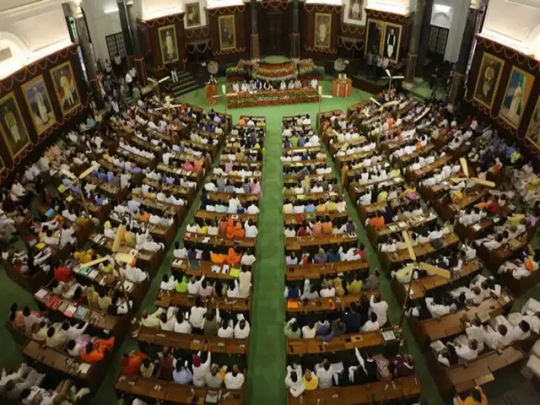
View On WordPress
#2014 Lok Sabha elections#Banking sector India 2014#BankingSector#BJP victory 2014#BJPGovernment#Economic reforms India#EconomicReforms#Election results market reaction#ElectionImpact#FinancialMarkets#Foreign direct investment India#ForeignInvestment#GST#GST Bill India#Indian financial markets#Indian stock market history#IndianEconomy#Infrastructure stocks India#InfrastructureStocks#Investor sentiment 2014#InvestorSentiment#Jan Dhan Yojana#JanDhanYojana#LokSabhaElections2014#Make in India#MakeInIndia#Market reaction to elections#MarketVolatility#Modi economic policies#Modi government policies
0 notes
Text
ET GLOBAL BUSINESS SUMMIT 2023 HIGHLIGHTS

“Humanity will be proud of itself after 100 years by studying the capability shown by India during the biggest crisis in 100 years”
India has entered the 'Amrit Kaal' of its independence, a period of national development and glory. To achieve the Prime Minister's vision of becoming a USD 5 trillion economy, the nation's Business leaders, State Governments, and Visionaries must work together to drive 'Economic Change'. Global Business Summit, a flagship initiative of The Times Group, will provide a platform to bring together visionaries, thought leaders, heads of state, policymakers, climate advocates, academicians, and corporate heads to cohesively drive this agenda and exert the momentum needed to achieve this glorious vision.
Global Business Summit 2023 seeks to provide solutions to key macroeconomic challenges by curating government-to-government interactions, business-to-government meetings, and business-to-business engagements to secure investments from domestic and international allies.
The Prime Minister, Shri Narendra Modi, addressed the Economic Times Global Business Summit at Hotel Taj Palace in Delhi on 17 February 2023. He noted the changes that have taken place since his last appearance at the ET Global Business Summit three years ago when WHO declared Covid a pandemic leading to massive rapid changes globally and in India. He also discussed the concept of 'antifragile' and the collective determination of 140 crore Indians during the three years of war and natural calamity. The Prime Minister explained how reimagination came into play when the country gave the current government an opportunity to serve in 2014, and how the government can improve welfare delivery to empower the poor and create infrastructure in a more efficient way. The Prime Minister elaborated on reimagining welfare delivery and talked about the delivery of bank accounts, loans, housing, property rights, toilets, electricity, and clean cooking fuel.
He also remembered former Prime Minister Shri Rajiv Gandhi's remark that 15 paise out of one rupee reached the intended beneficiaries. Shri Modi said that 10 crore toilets were constructed after 2014, taking sanitation coverage from below 40 percent to 100 percent in rural areas. He also gave examples of aspirational districts, such as institutional deliveries increasing from 47 percent to 91 percent, fully immunized children in the Aspirational District Barwani of Madhya Pradesh increasing from 40 percent to 90 percent, the success rate of TB treatment increasing from 48 percent to nearly 90 percent, and number of Gram Panchayats with broadband connectivity increasing from 20 percent to 80 percent. Regarding clean water supply, the Prime Minister said that only 3 crore tap connections were there in 2014, but in the last three and half years have added 8 crore new tap connections. The Prime Minister of India, Narendra Modi, highlighted the transformation of infrastructure in India, from political ambition to a grand strategy.
He noted that highways are being built at a speed of 38 km per day and more than 5 km of rail lines are being laid every day. The number of operational airports has doubled from 74 to 147, and 3.5 lakh kilometers of rural roads and 80 thousand kilometers of national highways have been built. He also highlighted the 1600-plus data layers of infrastructure mapping available on the GatiShakti platform, which can be linked to AI to decide the shortest and most efficient route. The Prime Minister also highlighted the reimagining infrastructure in India's aviation sector, which resulted in 128 air routes being opened up for civilian aircraft movement today, saving both time and fuel. This decision has also reduced 1 lakh tonnes of CO2 emissions.
The Prime Minister of India highlighted the achievements of his government in the last 9 years, such as laying 6 lakh kilometers of optical fiber, increasing the number of mobile manufacturing units, and reducing the rate of internet data. He also highlighted the 'Mai-Baap' culture of the past, which led to an atmosphere of mutual distrust and suspicion between the government and the citizens. After 2014, the 'govt-first' mentality was reimagined as a 'people-first' approach and the government worked on the principle of trusting its citizens. Examples of self-attestation, abolishing interviews from lower rank jobs, decriminalizing small economic offenses, Jan Vishwas Bill, collateral-free Mudra loans, and the government becoming a guarantor for MSMEs were given. The Prime Minister highlighted the reduction in taxes for the increase in gross tax revenue and said that taxpayers get motivated when they know that the tax paid is being spent efficiently.
He also touched upon faceless assessment and the Income Tax Department processing more than 6.5 crore returns this year. He emphasised that India's prosperity is the world's prosperity and that the theme of One World, One Family, One Future chosen for G-20 contains solutions to many challenges. He called upon everyone present to get involved in India's development journey as much as possible, as it gives them a guarantee of growth.
He told the world to keep an eye on India because we are going to create history by growing at the most exponential rate known to mankind.
Come, Grow with India.
This post was originally published on: Foxnangel
#Business expansion#business growth#business summit#ET Global business summit 2023#Grow with India#Growing economy#World's Largest economy
0 notes
Text
The Remarkable Journey Of Abhay Bhutada: Unveiling His Impact And Earnings At Poonawalla Fincorp
Meet Abhay Bhutada, a name synonymous with innovation and leadership in the finance sector. As the Managing Director of Poonawalla Fincorp, his journey from a Chartered Accountant to a prominent figure in the industry has been nothing short of inspiring. Let's delve into Abhay Bhutada's remarkable career, his impact at Poonawalla Fincorp, and his noteworthy salary journey.

Early Life
Born in Latur, Maharashtra, Abhay Bhutada's journey began with humble roots. He pursued his education at Venkatesh Vidyalaya and Rajarshi Shahu College before obtaining a bachelor's degree in Commerce from Symbiosis International University. In 2009, he achieved the milestone of becoming a Chartered Accountant, laying the foundation for his future endeavors.
Also Read: Who is Abhay Bhutada?
Career
Abhay's career trajectory exemplifies determination and vision. He commenced his journey as an SME finance professional at the Bank of India in 2010, where he honed his skills in financial management. In 2014, he ventured into entrepreneurship by founding TAB Capital Limited, a digital lending NBFC catering to MSME loans, personal loans, and consumer loans. Under his leadership, TAB Capital flourished, ultimately catching the eye of Poonawalla Finance, leading to its acquisition. Abhay's role as Managing Director & CEO at Poonawalla Finance marked a new chapter in his career, culminating in the formation of Poonawalla Fincorp in 2021 through the acquisition of Magma Fincorp Limited.
Abhay Bhutada Salary Journey
Abhay Bhutada's salary journey reflects his significant contributions to Poonawalla Fincorp. In the fiscal year 2023, he earned a notable salary of INR 78.1 crore, solidifying his position as one of the highest-paid managing directors in Corporate India. This substantial figure underscores the impact of his leadership and strategic decisions on the company's growth and success.
Awards & Accolades
Abhay Bhutada's achievements have not gone unnoticed, earning him recognition both nationally and internationally. He was honored with the Young Entrepreneur of India 2017 Award and was named the Most Promising Business Leader of Asia at the Asian Business Leaders Conclave 2020. Additionally, he received accolades such as Promising Entrepreneurs of India 2020 and Lokmat Maharashtrian Of The Year 2024. Such prestigious awards underscore Abhay's exceptional leadership and contribution to the finance industry.
Abhay Bhutada Salary

Beyond his impressive salary, Abhay Bhutada's salary reflects his significant influence and impact in the finance sector. His strategic foresight and business acumen have propelled Poonawalla Fincorp to unparalleled success, further enhancing his stature as a prominent figure in the industry.
Impact on the Finance Industry
Abhay Bhutada's contributions to the finance industry extend beyond his role at Poonawalla Fincorp. He has been a driving force behind various initiatives aimed at promoting financial inclusion and digital transformation. Through his leadership, Poonawalla Fincorp has spearheaded efforts to provide accessible and affordable financial services to underserved communities, empowering them to achieve their financial goals.
Also Read: Meet Abhay Bhutada: The Winner Of Lokmat Maharashtrian Of The Year 2024
Future Endeavors
As Abhay Bhutada continues to chart new territories in the finance sector, his commitment to innovation and excellence remains unwavering. With a focus on leveraging technology and fostering sustainable growth, he aims to position Poonawalla Fincorp as a global leader in the financial services industry. His visionary approach and relentless pursuit of excellence serve as a guiding light for aspiring entrepreneurs and industry professionals alike.
Conclusion
In conclusion, Abhay Bhutada's journey from an aspiring Chartered Accountant to the Managing Director of Poonawalla Fincorp is a testament to his resilience, innovation, and unwavering dedication. His visionary leadership and transformative impact on the finance industry have earned him widespread acclaim and admiration. As he continues to steer Poonawalla Fincorp towards greater heights, Abhay Bhutada's legacy as a trailblazer in the finance sector is firmly established. With his remarkable salary journey and noteworthy achievements, Abhay Bhutada stands as a beacon of inspiration for future generations of finance professionals.
0 notes
Text
PM Modi Calls for Economic Self-Reliance: Key Takeaways from RBI's 90th Year Commemoration
Introduction: Prime Minister Narendra Modi addressed the commemoration of the Reserve Bank of India's 90th year, highlighting the imperative for India to enhance its economic self-reliance. Let's delve into the key insights from his speech and its implications for India's economic future.
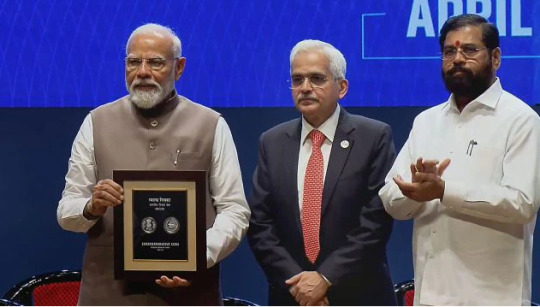
Content: Prime Minister Narendra Modi underscored the necessity for India to fortify its economic independence over the next decade. Emphasizing the importance of mitigating external challenges, Modi stressed the need to bolster the rupee's global acceptance and accessibility. With India's substantial contribution of 15% to global GDP growth, Modi positioned the nation as a crucial engine of global economic advancement.
India's aspiration to elevate the rupee to a global currency was underscored, with initiatives such as its inclusion in the Special Drawing Rights (SDR) basket and recalibration of the foreign portfolio investor (FPI) regime recommended by an RBI-appointed Inter-Departmental Group (IDG) last year.
PM Modi commended the RBI's efforts in revitalizing India's banking sector and economy, reminiscing about the challenges faced in 2014 and the significant strides made since then. Capital infusion of Rs 3.5 lakh crore in public sector banks and reforms aimed at strengthening governance have rejuvenated the banking sector's resilience. Notably, the Insolvency and Bankruptcy Code (IBC) facilitated the resolution of bad loans worth Rs 3.25 lakh crore, while gross NPAs plummeted to below 3%.
Modi attributed this transformation to the government's unwavering commitment, clear policies, and decisive actions. He emphasized the pivotal role of prudent financial policies, exemplified by the inflation targeting framework, in maintaining economic stability amidst global adversities. The government's strategic focus on fiscal consolidation and active price monitoring has contributed to moderating inflation levels, fostering an environment conducive to progress.
Conclusion: PM Modi's vision for India's economic self-reliance underscores the nation's resilience and determination to navigate global challenges. With concerted efforts towards bolstering the banking sector, fostering financial stability, and prioritizing inflation control, India is poised to realize its aspirations for sustainable economic growth in the years ahead.
0 notes
Text
Asia, a strategic region for global business.

Among the Asian nations playing an increasingly important role on the world stage, India is positioning itself as an emerging power with remarkable economic potential. Despite the challenges of the caste system, socio-economic inequalities and religious diversity, Narendra Modi's country has undertaken major tax reforms, modernized its infrastructure and launched the "Make in India" initiative to attract foreign investment and promote local manufacturing. By 2021, India has recorded economic growth of around 9.5%.
Vietnam has also achieved a remarkable economic transformation since its transition to a market economy in the 1990s. Relations with the United States were normalized in 1995. Vietnam now serves as a bulwark against Chinese expansion in the South China Sea.
North Korea, meanwhile, oscillates between its economic dependence on China and its desire for independence based on the "Juche" ideology. Reunification of the Korean peninsula remains dependent on normalization of relations with the United States.
Finally, the economic war between the USA and China is expressed in the debate on intellectual property rights and the Indo-Pacific strategy, advocated by the USA and Japan, to contain China. The Taiwan Strait issue remains a major point of tension.
India's quest for economic leadership
India, although hampered by its caste system, socio-economic inequalities and linguistic and religious diversity, has the potential to catch up with its Chinese neighbor. To do so, it is modernizing its infrastructure while maintaining its political system. Prime Minister Narendra Modi favors Hindu nationalism as the driving force, but India's success will largely depend on its ability to consolidate and develop its economy. As the world's largest democracy, India has a crucial role to play in the geopolitical balance of the region. This vast country is one of the world's fastest-growing economies. In 2021, despite the challenges posed by the COVID-19 pandemic, its GDP grew by around 9.5%. It's easy to understand its economic potential.
The Indian government has introduced major tax reforms, including the implementation of the Goods and Services Tax (GST) in 2017. This reform aims to unify the domestic market, thereby promoting economic growth and facilitating business.
The "Make in India" initiative launched in 2014 aims to encourage local manufacturing and attract foreign investment. Several international companies have already invested heavily in India, strengthening the country's manufacturing sector.
India is a major player in the information technology and services industry. The IT and software sector represents a significant part of its economy, generating substantial revenues and creating jobs.
Although India faces socio-economic inequalities, it has made significant progress in reducing poverty. According to World Bank data, India's poverty rate has fallen considerably in recent years.
India is investing heavily in infrastructure development, particularly in the transport, energy and telecommunications sectors. These investments are helping to stimulate economic growth and improve regional connectivity.
As the world's largest democracy, India plays a crucial role in the geopolitical balance of the region. It maintains diplomatic relations with many world powers and actively participates in international forums such as the G20 and the BRICS.
Despite these achievements, India must overcome the challenges of corruption and bureaucracy, and improve education and access to healthcare for its entire population. The country's cultural and linguistic diversity also remains a challenge to promoting national unity.
Vietnam and North Korea: independent players
Vietnam and North Korea have a history of resistance to foreign oppression, and maintain nationalist positions of independence. Vietnam has been an ally of the United States since 1995, through its transition to a market economy and its policy of openness. It serves as Washington's bulwark against Chinese expansion in the South China Sea. The evolution of relations between Vietnam and the United States since 1995 is an astonishing story that reflects significant changes in geopolitical dynamics in Asia. To better understand this evolution, we need to go back to the end of the Vietnam War. The Vietnam War, which ended in 1975, resulted in the reunification of the country under a Communist government. Relations between the United States and Vietnam remained tense for decades, in the context of the war's aftermath and ideological differences.
The first steps towards normalizing relations between the USA and Vietnam were taken as early as the 1980s. However, full normalization of diplomatic relations was not officially established until 1995, under the presidency of Bill Clinton.
Vietnam undertook major economic reforms in the 1980s and 1990s, known as the "Đổi Mới" (Renewal). These reforms opened Vietnam's economy to the global market, promoting economic growth and attracting foreign investment. Thanks to its economic reforms, Vietnam has enjoyed remarkable economic growth. It has become one of the fastest-growing economies in Southeast Asia, attracting the attention of foreign investors, including Americans. The United States and Vietnam have developed close economic ties. Vietnam has become an important trading partner for the United States in Southeast Asia, with bilateral trade steadily increasing.
Vietnam and the United States have also strengthened their security cooperation. This collaboration includes joint military exercises, intelligence exchanges and discussions on regional challenges, such as security in the South China Sea.
The South China Sea is a crucial geostrategic zone where China claims territorial rights that are disputed by other countries in the region, including Vietnam. The United States sees Vietnam as an essential ally in countering Chinese expansion in this region. Vietnam, as a country in the region, shares the interest in maintaining freedom of navigation and preventing conflict in the South China Sea. The strengthened relationship between the USA and Vietnam is designed to counter China's growing influence in Southeast Asia. The USA is seeking to strengthen ties with countries in the region to counter China's historic hegemony.
North Korea, for its part, oscillates between dependence on China and a desire for independence. Its "Juche" ideology reinforces national unity.
North Korea's situation is unique and complex, oscillating between dependence on China and a desire for independence based on its "Juche" ideology." North Korea is heavily dependent on China for its supply of energy, food and other essential resources. The geographical proximity and long history of relations between the two countries make it a crucial partnership for North Korea's economic and political survival.
Juche" is the official ideology of North Korea, advocating self-sufficiency and national independence. It serves as the pillar of national unity and the legitimacy of the North Korean regime. The North Korean government insists on the need to preserve "Juche" to guarantee the country's autonomy.
The division of Korea into two distinct states, North and South Korea, is the result of the Korean War (1950-1953). Since then, the reunification of the Korean peninsula has been a goal pursued by both states, although visions of reunification vary considerably.
The extremely bitter Korean War was a traumatic experience for both Koreas and the international community. It showed that forced reunification was not viable, and would entail enormous human and economic costs. As a result, both Koreas have adopted a policy of peaceful reunification.
The normalization of relations between North Korea and the United States is crucial to achieving reunification. However, relations have been marked by ups and downs, and negotiations on denuclearization have often been at the center of international concerns. The "sunshine policy" pursued by South Korean presidents Kim Dae-jung, Roh Moo-hyun and Moon Jae-in has promoted rapprochement between the two Koreas. This approach has encouraged cultural, economic and family exchanges, strengthening ties between peoples on both sides of the border.
Despite these efforts to promote peaceful reunification, challenges remain. Ideological, economic and cultural differences between the two Koreas remain significant. Moreover, the issue of North Korea's denuclearization remains a major stumbling block in the negotiations.
The war between the USA and China
The economic war between the USA and China is having a major impact on the global economy and international relations. Intellectual property theft is a major concern in U.S.-China trade relations. Foreign companies, including American ones, have reported cases of forced technology transfer and intellectual property theft in China. These practices undermine fair competition and harm foreign companies.
The protection of intellectual property rights is essential to China's own economic development. Without adequate protection, foreign investors may be reluctant to share their technology and invest in China. If China is to continue to grow on the world stage, it must strengthen its protection of intellectual property rights.
The Export Control Reform Act (IRA) adopted by the United States aims to restrict China's rise in the semiconductor industry. However, this measure is causing concern as it has implications for companies operating in China, such as Samsung and SK, which have invested heavily in the country and operate semiconductor plants. Technological competition between the USA and China should be encouraged, as it can stimulate innovation and technological progress. However, protectionism can disrupt existing alliances and the global trade order.
On the other hand, the Indo-Pacific strategy promoted by the United States and Japan seeks to contain China. India, Europe and South Korea, on the other hand, seek to promote freedom of navigation and trade in the region.
The Taiwan Strait remains at the heart of tensions between the United States and China. China considers Taiwan an integral part of its territory, while Taiwan maintains its de facto independence. Addressing this issue while respecting the One China principle could help reduce military tensions with China. But the problem remains American. The American empire is not prepared to let China take its rightful place at the summit of nations. It is to be feared that Uncle Sam will use any means necessary, as demonstrated by the COVID-19 virus attack in Wuhan in November 2019, to sabotage Beijing's ascent.
0 notes
Text
Decoding Data: How Companies Drive Success Through Analysis

In our data-rich world, information surges from diverse sources, forming the backbone of modern decision-making. Data analysis, a prized asset of our era, empowers insightful decision-making across industries. Whether giants like Microsoft, Google, and Facebook or smaller retail enterprises, businesses leverage data analysis to dissect sales trends and understand customer behaviour.
Microsoft's CEO, Satya Nadella, underscores the pivotal role of data as the primary currency in sustaining business operations. It not only answers current questions but also foretells future events, offering a shield against potential disruptions.
Advantages of Data Analysis:
Data analysis forms the bedrock of sound decision-making, offering a shift from intuition to a data-driven approach. By providing insights rooted in data, businesses can inform decisions and shape strategies. Amidst the chaotic influx of data, analysis acts as a guiding force, bringing order and unveiling new perspectives.
It operates as an agile methodology, valuing speed, data freshness, and adaptability to business changes. This approach not only accelerates decision-making but also trims costs, providing a competitive edge. While initial investments in data analytics may seem higher, the payoff lies in a deeper understanding of your business.
Data analysis aids in market research, revealing the competitive landscape and growth opportunities through customer behaviour analysis. The ultimate goal isn't just to be data-driven but to be "data-informed," converting data into intelligent action.
Different industries where data analytics play an important role are: –
IRON & STEEL:
TATA Steel India strategically enhanced its operations through data and analytics, tackling issues of high production costs, low efficiency, and customer dissatisfaction. By analyzing data from production, supply chain management, and customer feedback, the company pinpointed areas for improvement, resulting in waste reduction and an enhanced customer experience. This data-centric approach yielded significant outcomes, including reduced costs, heightened efficiency, and garnered global recognition for their transformative efforts.
SPORTS:
In 2014, Germany won the FIFA World Cup thanks to data analytics from SAP. SAP analyzed video footage from the pitch to provide insights into opponents' tactics and improve performance. Oliver Bierhoff, the team's manager, used these insights to reduce ball possession time from 3.4 seconds to 1.1 seconds. The insights helped target areas such as Cristiano Ronaldo's box movement and French concentration in the middle. Data analysis has become a crucial tool in sports, helping players identify strengths and weaknesses, improve team performance, and develop data-driven strategies.
E-COMMERCE:
Amazon leverages big data technology to optimize its commerce, targeting potential customers and analyzing data from 310 million accounts. The company tracks user behaviour, encompassing not only purchases but also non-purchases. This extensive data allows Amazon to offer personalized recommendations, enhance the overall customer experience, and ultimately boost sales.
In addition to customer engagement, Amazon applies big data analytics to optimize its supply chain. By predicting demand and adjusting inventory accordingly, the company minimizes waste and increases efficiency. This strategic approach positions Amazon as a leader in the retail industry.
BANKING:
HDFC Bank, one of the largest private sector banks, harnesses the power of data analysis for fraud detection, risk management, and marketing. Through the analysis of transaction data, the bank can identify unusual activities, anticipate potential fraud, and proactively prevent it, thereby ensuring security and trust. This analytical approach is also instrumental in predicting loan defaults, fostering growth, and enhancing customer experiences.
HEALTHCARE:
APOLO, India's largest healthcare organization, employs data analytics to offer real-time patient support, enhance treatment recommendations, identify high-risk populations, advance precision medicine, and monitor patient engagement. Through the analysis of genetic and clinical data, APOLO develops personalized treatment plans, reduces costs, and tracks patient engagement, ultimately leading to improved health outcomes.
Advances in technology and data analysis have empowered companies to analyze extensive datasets, identify patterns, and make predictions for performance improvements. VENTURESATHI aims to provide businesses with cutting-edge data analysis tools to revolutionize their operations.
Explore the article “How companies use the power of data analytics?” to discover how companies leverage data analytics for powerful insights and transformative strategies. Dive in now for a quick journey into the world of data-driven innovation!
1 note
·
View note
Text
Narendra Modi ji the Great leader for India
Narendra Modi, a name that reverberates with dynamic leadership and visionary governance, has etched his name in the annals of Indian political history. As the 14th Prime Minister of India, he has played a pivotal role in shaping the nation’s trajectory. This blog delves into the life, political journey, and transformative impact of Narendra Modi on India.
1. Prime Ministership: A New Era
In 2014, Narendra Modi steered the BJP to a resounding victory in the general elections, securing an absolute majority in the Lok Sabha (India’s lower house of Parliament). His campaign, centered on the promise of “Achhe Din” (Good Days), struck a chord with a diverse cross-section of the Indian populace. On May 26, 2014, Modi was sworn in as the Prime Minister of India.
Under Modi’s leadership, India has witnessed sweeping transformations and noteworthy progress across various sectors:
Economic Reforms: The Modi government introduced a series of groundbreaking economic reforms, including the “Make in India” campaign aimed at boosting domestic manufacturing, “Digital India” to foster technological advancement, and “Startup India” to nurture entrepreneurship.
Global Outreach: Modi emerged as a prominent figure on the international stage, cultivating robust ties with major world powers and neighboring nations. His “Neighborhood First” policy and efforts to bolster relations with countries like the United States and Israel have garnered global attention.
Infrastructure Overhaul: The government embarked on an ambitious journey to revamp India’s infrastructure. Projects encompassed the construction of extensive road networks, modernization of railways, and the “Smart Cities” initiative to build sustainable urban centers.
Financial Inclusion: The “Pradhan Mantri Jan Dhan Yojana” aimed at bringing financial services to the unbanked, providing millions with access to banking facilities. The “Pradhan Mantri Mudra Yojana” empowered small business owners by offering financial support.
Clean India Campaign: The “Swachh Bharat Abhiyan” became a nationwide mission for a cleaner and more hygienic India, with citizens actively participating in cleanliness drives.
Digital Revolution: India’s digital landscape experienced a profound transformation under Modi’s guidance, with a focus on expanding internet connectivity and promoting digital services to the farthest corners of the nation.
2. Challenges and Controversies
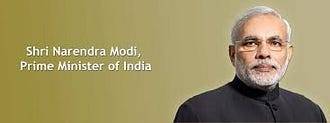
3. Legacy and Enduring Impact
Narendra Modi’s influence on Indian politics and governance is indelible. His leadership is characterized by resoluteness, charisma, and an unwavering commitment to development. His ability to connect with the masses through social media and public engagements has solidified his status as a formidable political figure.
As India marches forward into the future, Narendra Modi’s legacy will be defined by his tireless efforts to position the nation as a global economic powerhouse, his emphasis on infrastructure development, and his role in shaping India’s foreign policy. He remains a polarizing figure, evoking passionate support and vocal criticism, a testament to the multifaceted nature of Indian politics.
4. Early Life and Political Ascent
Narendra Damodardas Modi was born on September 17, 1950, in Vadnagar, a quaint town in Gujarat, India. His extraordinary journey from the son of a tea vendor to the Prime Minister of the world’s largest democracy is a testament to his unwavering resolve and relentless dedication. At a young age, Modi joined the Rashtriya Swayamsevak Sangh (RSS), a Hindu nationalist organization, embodying his commitment to public service and national pride.

Modi’s political odyssey began in earnest when he became a part of the Bharatiya Janata Party (BJP) in the 1980s. Over the years, he held various party roles and assumed the office of Chief Minister of Gujarat in 2001. His tenure at the helm of Gujarat was marked by remarkable economic growth, infrastructural development, and a focus on efficient governance.
Conclusion
Narendra Modi’s extraordinary journey from humble beginnings to the highest office in India is a testament to his unyielding spirit and astute political acumen. As Prime Minister, he has dedicated himself to ushering in transformative changes across India’s economic, social, and political landscapes. While his tenure has been marked by significant accomplishments, it has also encountered its fair share of trials and tribulations. As India continues its voyage in the 21st century, Narendra Modi remains a central figure in the nation’s political narrative, leaving an indelible imprint on the country he leads.Blaze
0 notes
Text
"Narendra Modi: Charting the Apex of Leadership in India"
Narendra Modi, a name that reverberates with dynamic leadership and visionary governance, has etched his name in the annals of Indian political history. As the 14th Prime Minister of India, he has played a pivotal role in shaping the nation’s trajectory. This blog delves into the life, political journey, and transformative impact of Narendra Modi on India.
1. Prime Ministership: A New Era
In 2014, Narendra Modi steered the BJP to a resounding victory in the general elections, securing an absolute majority in the Lok Sabha (India’s lower house of Parliament). His campaign, centered on the promise of “Achhe Din” (Good Days), struck a chord with a diverse cross-section of the Indian populace. On May 26, 2014, Modi was sworn in as the Prime Minister of India.
Under Modi’s leadership, India has witnessed sweeping transformations and noteworthy progress across various sectors:
Economic Reforms: The Modi government introduced a series of groundbreaking economic reforms, including the “Make in India” campaign aimed at boosting domestic manufacturing, “Digital India” to foster technological advancement, and “Startup India” to nurture entrepreneurship.
Global Outreach: Modi emerged as a prominent figure on the international stage, cultivating robust ties with major world powers and neighboring nations. His “Neighborhood First” policy and efforts to bolster relations with countries like the United States and Israel have garnered global attention.
Infrastructure Overhaul: The government embarked on an ambitious journey to revamp India’s infrastructure. Projects encompassed the construction of extensive road networks, modernization of railways, and the “Smart Cities” initiative to build sustainable urban centers.
Financial Inclusion: The “Pradhan Mantri Jan Dhan Yojana” aimed at bringing financial services to the unbanked, providing millions with access to banking facilities. The “Pradhan Mantri Mudra Yojana” empowered small business owners by offering financial support.
Clean India Campaign: The “Swachh Bharat Abhiyan” became a nationwide mission for a cleaner and more hygienic India, with citizens actively participating in cleanliness drives.
Digital Revolution: India’s digital landscape experienced a profound transformation under Modi’s guidance, with a focus on expanding internet connectivity and promoting digital services to the farthest corners of the nation.
2. Challenges and Controversies

3. Legacy and Enduring Impact
Narendra Modi’s influence on Indian politics and governance is indelible. His leadership is characterized by resoluteness, charisma, and an unwavering commitment to development. His ability to connect with the masses through social media and public engagements has solidified his status as a formidable political figure.
As India marches forward into the future, Narendra Modi’s legacy will be defined by his tireless efforts to position the nation as a global economic powerhouse, his emphasis on infrastructure development, and his role in shaping India’s foreign policy. He remains a polarizing figure, evoking passionate support and vocal criticism, a testament to the multifaceted nature of Indian politics.
4. Early Life and Political Ascent
Narendra Damodardas Modi was born on September 17, 1950, in Vadnagar, a quaint town in Gujarat, India. His extraordinary journey from the son of a tea vendor to the Prime Minister of the world’s largest democracy is a testament to his unwavering resolve and relentless dedication. At a young age, Modi joined the Rashtriya Swayamsevak Sangh (RSS), a Hindu nationalist organization, embodying his commitment to public service and national pride.

Modi’s political odyssey began in earnest when he became a part of the Bharatiya Janata Party (BJP) in the 1980s. Over the years, he held various party roles and assumed the office of Chief Minister of Gujarat in 2001. His tenure at the helm of Gujarat was marked by remarkable economic growth, infrastructural development, and a focus on efficient governance.
Conclusion
Narendra Modi’s extraordinary journey from humble beginnings to the highest office in India is a testament to his unyielding spirit and astute political acumen. As Prime Minister, he has dedicated himself to ushering in transformative changes across India’s economic, social, and political landscapes. While his tenure has been marked by significant accomplishments, it has also encountered its fair share of trials and tribulations. As India continues its voyage in the 21st century, Narendra Modi remains a central figure in the nation’s political narrative, leaving an indelible imprint on the country he leads.Blaze
0 notes
Text
Narendra Modi ji the Great leader for India
Narendra Modi, a name that reverberates with dynamic leadership and visionary governance, has etched his name in the annals of Indian political history. As the 14th Prime Minister of India, he has played a pivotal role in shaping the nation’s trajectory. This blog delves into the life, political journey, and transformative impact of Narendra Modi on India.
1. Prime Ministership: A New Era
In 2014, Narendra Modi steered the BJP to a resounding victory in the general elections, securing an absolute majority in the Lok Sabha (India’s lower house of Parliament). His campaign, centered on the promise of “Achhe Din” (Good Days), struck a chord with a diverse cross-section of the Indian populace. On May 26, 2014, Modi was sworn in as the Prime Minister of India.
Under Modi’s leadership, India has witnessed sweeping transformations and noteworthy progress across various sectors:
Economic Reforms: The Modi government introduced a series of groundbreaking economic reforms, including the “Make in India” campaign aimed at boosting domestic manufacturing, “Digital India” to foster technological advancement, and “Startup India” to nurture entrepreneurship.
Global Outreach: Modi emerged as a prominent figure on the international stage, cultivating robust ties with major world powers and neighboring nations. His “Neighborhood First” policy and efforts to bolster relations with countries like the United States and Israel have garnered global attention.
Infrastructure Overhaul: The government embarked on an ambitious journey to revamp India’s infrastructure. Projects encompassed the construction of extensive road networks, modernization of railways, and the “Smart Cities” initiative to build sustainable urban centers.
Financial Inclusion: The “Pradhan Mantri Jan Dhan Yojana” aimed at bringing financial services to the unbanked, providing millions with access to banking facilities. The “Pradhan Mantri Mudra Yojana” empowered small business owners by offering financial support.
Clean India Campaign: The “Swachh Bharat Abhiyan” became a nationwide mission for a cleaner and more hygienic India, with citizens actively participating in cleanliness drives.
Digital Revolution: India’s digital landscape experienced a profound transformation under Modi’s guidance, with a focus on expanding internet connectivity and promoting digital services to the farthest corners of the nation.
2. Challenges and Controversies
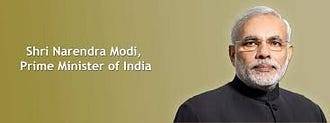
3. Legacy and Enduring Impact
Narendra Modi’s influence on Indian politics and governance is indelible. His leadership is characterized by resoluteness, charisma, and an unwavering commitment to development. His ability to connect with the masses through social media and public engagements has solidified his status as a formidable political figure.
As India marches forward into the future, Narendra Modi’s legacy will be defined by his tireless efforts to position the nation as a global economic powerhouse, his emphasis on infrastructure development, and his role in shaping India’s foreign policy. He remains a polarizing figure, evoking passionate support and vocal criticism, a testament to the multifaceted nature of Indian politics.
4. Early Life and Political Ascent
Narendra Damodardas Modi was born on September 17, 1950, in Vadnagar, a quaint town in Gujarat, India. His extraordinary journey from the son of a tea vendor to the Prime Minister of the world’s largest democracy is a testament to his unwavering resolve and relentless dedication. At a young age, Modi joined the Rashtriya Swayamsevak Sangh (RSS), a Hindu nationalist organization, embodying his commitment to public service and national pride.
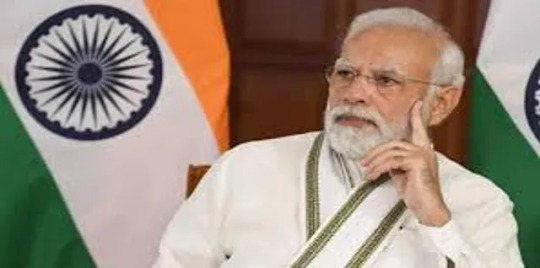
Modi’s political odyssey began in earnest when he became a part of the Bharatiya Janata Party (BJP) in the 1980s. Over the years, he held various party roles and assumed the office of Chief Minister of Gujarat in 2001. His tenure at the helm of Gujarat was marked by remarkable economic growth, infrastructural development, and a focus on efficient governance.
Conclusion
Narendra Modi’s extraordinary journey from humble beginnings to the highest office in India is a testament to his unyielding spirit and astute political acumen. As Prime Minister, he has dedicated himself to ushering in transformative changes across India’s economic, social, and political landscapes. While his tenure has been marked by significant accomplishments, it has also encountered its fair share of trials and tribulations. As India continues its voyage in the 21st century, Narendra Modi remains a central figure in the nation’s political narrative, leaving an indelible imprint on the country he leads.
0 notes
Text
How Is Central Government Accelerating Digital Transformation of India?
The Government of India implemented the ‘Digital India’ program to transform the country into a digitally empowered society by improving ease of doing business. Additionally, the central government also introduced the ‘Make in India’ initiative in 2014 to encourage domestic production and increase the contribution of the industrial sector to the gross domestic product of the country. With the implementation of these two central-level programs, the manufacturing industry, especially for manufacturing automobiles, electronics systems, renewable energy products, pharmaceuticals, roads and highways equipment, and food processing products, is increasingly adopting digital manufacturing tools.

Thus, the improving and growing manufacturing sector is expected to drive the Indian digital transformation market at an exceptional CAGR of 74.7% during the forecast period (2019–2024). The market was valued at $24.5 billion in 2018 and it is projected to generate $710.0 billion revenue by 2024. In recent years, the deployment of internet of things (IoT) technology and enterprise resource planning (ERP) systems in the manufacturing sector has become a prominent market trend.
In the preceding years, large enterprises of India were the largest user of digital solutions, such as artificial intelligence (AI), augmented reality (AR)/virtual reality (VR), big data, blockchain, cloud, chatbots, cybersecurity, eSignature, IoT, mobility, machine learning (ML), and social media, and digital services, such as professional services and training and support, due to their strong financial position. Owing to the availability of extensive capital, the large enterprises are increasingly implementing digital strategies across operation channels to improve their position. In addition to large-sized enterprises, medium and small businesses are also focusing on digital transformation to improve their operations.
The vertical segment of the Indian digital transformation market is classified into banking, financial services, and insurance (BFSI), energy and utilities, healthcare, manufacturing, oil and gas, retail, telecom and IT, transportation and logistics, and others, such as construction, hospitality, and tourism. Under this segment, the BFSI category generates the highest revenue and exhibits the fastest growth due to the surging focus of financial institutes on customer satisfaction and digital operating models. The BFSI sector needs to incorporate advanced technologies in its operational channels to cater to customer needs and increase its productivity.
In contemporary times, digital transformation in India can be credited to Wipro Limited, Clarion Technologies Inc., Dell Technologies Inc., Tata Consultancy Services Limited, HCL Technologies Limited, Kellton Tech Solutions Ltd., Datamatics Global Services Limited, Cisco Systems Inc., Infosys Limited, Sasken Technologies Ltd., Mindtree Limited, Cognizant Technology Solutions Corporation, Accenture plc, and Tech Mahindra Limited. These IT companies are currently focusing on content customization and differentiation to reach out to a greater number of customers.
According to P&S Intelligence, the southern region accounts for the largest share in the Indian digital transformation market, and it demonstrates the fastest growth in the market. This can be ascribed to the presence of prominent IT companies in Mysuru, Bengaluru, Mangalore, Chennai, Trivandrum, and Kochi, and the successful implementation of numerous industrial and technologies initiatives, on account of rapid economic growth and existence of a conducive business environment in the region. IT giants such as Infosys, Accenture, Wipro, and International Business Machines (IBM) Corporation have prominent branches in Bangalore.
Thus, the booming manufacturing sector will accelerate the adoption of digital solutions and services in India in the foreseeable future.
0 notes
Text
UIDAI: Empowering India's Citizens Through Aadhaar-Linked Banking
Introduction
In an era marked by digital transformation, India has undertaken a pioneering initiative to empower its citizens through the Aadhaar system, administered by the Unique Identification Authority of India (UIDAI). Aadhaar, a 12-digit unique identification number, has not only become the foundation for numerous government services but has also revolutionized the banking sector in India. This article explores how Aadhaar-linked banking is transforming the financial landscape of India, benefiting millions of its citizens.
The Aadhaar Revolution
Launched in 2009, the Aadhaar program aimed to provide every Indian resident with a unique identification number. With more than 1.3 billion Aadhaar numbers issued as of my last knowledge update in September 2021, it has emerged as one of the world's largest biometric identity systems. This unique identifier has opened doors to a multitude of services, including welfare schemes, healthcare, and most notably, banking.
Streamlining Financial Inclusion
One of the most significant impacts of Aadhaar has been in the realm of financial inclusion. India, like many developing nations, has a substantial unbanked population. Prior to Aadhaar, opening a bank account was often a cumbersome and time-consuming process, especially for those residing in remote areas. Aadhaar's biometric authentication has simplified this procedure, enabling even those without traditional identification documents to access banking services.
The Jan Dhan Yojana
In 2014, the Government of India launched the Pradhan Mantri Jan Dhan Yojana (PMJDY), a financial inclusion program aimed at providing basic banking services to all. Aadhaar played a pivotal role in the success of this initiative. Under PMJDY, individuals could open zero-balance bank accounts with just their Aadhaar number and biometric verification, making banking accessible to even the most economically disadvantaged.
Direct Benefit Transfer (DBT)
Aadhaar has been instrumental in curbing leakages and ensuring the efficient delivery of government subsidies and benefits through the Direct Benefit Transfer (DBT) mechanism. By linking Aadhaar numbers to bank accounts, the government has been able to directly transfer subsidies for food, fuel, and other essential commodities to beneficiaries. This has not only reduced corruption but also made welfare programs more accessible to those who need them most.
Digital Payments and Aadhaar
The integration of Aadhaar with banking has also given a significant boost to digital payments in India. Aadhaar-enabled payment systems, such as the Aadhaar Enabled Payment System (AEPS) and the Unified Payments Interface (UPI), have gained widespread popularity. These systems allow individuals to make transactions, check balances, and withdraw cash using their Aadhaar number and biometric authentication, even in rural areas where traditional banking infrastructure is limited.
Financial Services at Your Fingertips
Aadhaar-linked banking has not only facilitated basic financial services but has also opened doors to a range of advanced banking products. Individuals can now access loans, insurance, and investment products seamlessly, all thanks to their Aadhaar-based identity. This has paved the way for greater financial security and economic growth among India's diverse population.
Challenges and Concerns
While Aadhaar-linked banking has been a game-changer for financial inclusion, it has not been without its share of challenges and concerns. Data privacy and security issues have been a subject of debate. Ensuring the protection of biometric data and personal information remains a top priority for UIDAI and the government.
Moreover, there have been instances of authentication failures, particularly in rural areas with poor connectivity or where individuals have difficulty with biometric authentication due to old age or physical disabilities. Addressing these challenges is essential to ensure that Aadhaar-linked banking is truly inclusive.
Future Prospects
The journey of Aadhaar-linked banking is far from over. UIDAI continues to explore ways to enhance the system, including the use of Aadhaar for digital signatures, document verification, and eKYC (electronic Know Your Customer) processes. These innovations have the potential to further simplify and secure financial transactions in India.
Conclusion
The Aadhaar system, administered by UIDAI, has revolutionized banking in India. It has not only facilitated financial inclusion but has also streamlined government welfare programs, reduced corruption, and paved the way for digital payments and advanced financial services. Despite challenges, Aadhaar-linked banking has empowered millions of Indians, bringing them into the formal financial system and offering them opportunities for economic growth and stability. As India continues its journey toward becoming a digital economy, Aadhaar remains a cornerstone of this transformation, ensuring that every citizen has the means to participate fully in the nation's progress.
1 note
·
View note
Text
India To Surpass China To Become The World Largest International Market
India is poised to become the world's largest international market in 2023, surpassing China, according to a statement made by Walmart's Chief Financial Officer, Brett Biggs. This is due to several factors, including a growing middle class, increasing internet and smartphone penetration, and the government's push toward digitalization.
Foreign Direct Investment (FDI) in India has played a significant role in India's growth story over the past few decades, and the country has witnessed a steady increase in FDI inflows in recent years.
India's e-commerce market has seen significant growth in recent years, with companies such as Amazon, Walmart-owned Flipkart, and Reliance Retail's JioMart expanding their operations in the country. The COVID-19 pandemic has also accelerated the shift toward online shopping, with consumers increasingly turning to e-commerce platforms to purchase essential goods and services.
In addition to the growth of the e-commerce sector, India's retail industry is also experiencing a transformation. The government has implemented several initiatives, such as the National Retail Policy and the Single Brand Retail Trade Policy, to attract foreign investment and promote domestic manufacturing. This has led to increased interest from international retailers, such as Walmart, who see India as a lucrative market.
India's demographic advantage, with a large and young population, also contributes to its potential as a major market. The country's middle class is expected to continue growing, with estimates suggesting that it could reach 547 million people by 2025, up from 267 million in 2016. This represents a significant opportunity for retailers, who are looking to tap into the growing consumer base.
The government's push towards digitalization, including initiatives such as Digital India and the Unified Payments Interface (UPI), has also played a role in India's rise as a major market. These initiatives have helped to increase internet and smartphone penetration, making it easier for consumers to access e-commerce platforms and conduct online transactions. This has also attracted significant investment from global players. For example, Amazon and Walmart have invested heavily in India's e-commerce sector, while Google and Facebook have invested in the country's digital payments ecosystem.
The government has also taken steps to improve the ease of doing business in India, such as simplifying tax procedures, reducing red tape, and improving infrastructure. India has climbed the World Bank's Ease of Doing Business rankings from 142 in 2014 to 63 in 2019, and the government aims to break into the top 50 in the next few years.
In conclusion, India's potential as a major market is undeniable. With a growing middle class, increasing internet and smartphone penetration, and the government's push toward digitalization, the country is set to become the world's largest international market in 2023. Retailers and e-commerce companies must continue to adapt to the changing market conditions and take advantage of the opportunities presented by India's transformation.
Fox&Angel is an open strategy consulting ecosystem, put together by a top-line core team of industry experts, studded with illustrious success stories, learnings, and growth. Committed to curate bespoke business & strategy solutions for each of your challenges, we literally handpick consultants from across the globe and industries who fit the role best and help you on your path to success.
This post was originally published on: Foxnangel
#Business expansion#business growth#fdi in india#Foreign Direct Investment#FoxNAngel#Grow with India#Growing economy#Indian growing economy#Indian market#Invest in India#Investment#strategy consulting
0 notes
Text
What is ADB
Introduction:
ADB: Asian Development Bank
ADB stands for Asian Development Bank.
It is a regional development bank that is Asian in character. It was established to reduce poverty and foster economic growth and cooperation in Asia and the Pacific. It assists in the socioeconomic development of member countries by providing loans, grants, and technical assistance.
It has 67 members, 48 of which are from Asia and the Pacific region. It is headquartered in Mandaluyong, Philippines, and as of July 2017, Takehiko Nakao is the president of ADB.
Areas of Focus
ADB operations give emphasis on the following areas:
Infrastructure
Environment
Education
Regional integration
Finance Sector development
Climate Change
By funding initiatives in fields like education and health, the ADB seeks to promote sustainable and inclusive economic growth while also assisting in the development of the capital markets and corporate infrastructure in its target nations. There are other, more specialized sectors as well, which are used in secondary capacity-building programs. Examples include Public-Private Partnerships (PPPs), Information Technology, Regional Cooperation, and Integration, etc.
Brief History
The idea of the Asian Development Bank was conceived in the early 1960s. Later, a resolution was passed at the first Ministerial Conference on Asian Economic Cooperation in 1963 to establish the ADB.
On 19 December 1966, ADB was established with 31 members and Takeshi Watanabe as its first President. In the beginning, ADB was focused on food production and rural development.
In 1970, ADB's first bond issue worth $16.7 million was issued in Japan.
In 1974, Asian Development Fund was established to provide low-interest loans to the poorest member countries.
In 1982, it opened its first field office in Bangladesh to come closer to the people in need.
In mid-1997, during a severe financial crisis in the region, it started projects to strengthen the financial sector, i.e., it approved its largest single loan worth $ 4 billion to the Republic of Korea.
In 2004, it spent more than $800 million on the recovery of areas hit by the Tsunami in Sri Lanka, India, Indonesia, and Maldives.
In 2008, it launched a new long-term strategy framework 'Strategy 2020' to respond to the changing needs of the region.
In 2014, a midterm review of the "Strategy 2020" was released and various organizational changes were introduced to improve the business processes and to become stronger and better.
The Functions of the Asian Development Bank:
The Asian Development Bank provides grants, loans, technical assistance, and equity investments to its developing member countries, the private sector, and public-private partnerships in order to boost development. The ADB frequently promotes policy discussions and offers consulting services. Additionally, they make use of co-financing initiatives that draw on official, commercial, and export finance sources while offering assistance.
The ADB is open to members and associate members of the United Nations Economic Commission for Asia and the Far East. It is also open to developing nations that are members of the United Nations or any of its specialized agencies, including other regional nations and non-regional nations.
Asian Development Bank Organisational Chart
The website of ADB claims that "The Board of Governors holds all of the institution's functions, which are delegated in part to the Board of Directors by the Agreement Establishing the Asian Development Bank, or ADB Charter. The Board of Governors holds a conventional gathering once every year during ADB's Annual Meeting. "
The ADB's essential policy-making body is the Board of Governors, which comprises one delegate from every part.
The Asian Development Bank's two largest shareholders are the United States and Japan. Despite coming primarily from the Asia-Pacific area, the developed countries are also well-represented among the Bank's members. Typically, regional development banks work together on projects with the World Bank and the International Monetary Fund (IMF).
The Asian Development Bank is controlled by whom?
A board of governors that represents the ADB's member nations oversees the organization. The top five shareholders of the ADB as of 2022 are the People's Republic of China (6.4%), India (6.3%), Australia (5.8%), Japan (15.6% each), and the United States.
1 note
·
View note
Text
Stepping into the Future: Trends, Challenges, and Forecast for the Volatile Corrosion Inhibitors (VCI) Packaging Market until 2033
The market for packaging volatile corrosion inhibitors (VCI) was estimated at US$ 778 million in 2020 and is anticipated to increase at a compound annual growth rate (CAGR) of 6.1% from 2022 to 2029, reaching US$ 1.18 billion.
Rapid industrialization in industries like aerospace, automotive, and processing is the primary cause of the rising demand for metals, especially steel, iron, and other metals. Another prominent end-user is the architecture, building, and construction (ABC) sector. The World Bank estimates that in 2020, the global manufacturing value will have a GDP rise of almost 16%.
The volatile corrosion inhibitors packaging market is anticipated to migrate towards biodegradable or bio-based packaging in order to address environmental concerns and comply with strict plastics laws. This pattern fits with the increasing focus on sustainable packaging practices.
The growth of the shipping and logistics vertical, driven by export activities, further boosts the demand for durable packaging. VCI packaging, known for its ability to protect against corrosion, becomes a vital solution in this context.
Future Market Insights conducted a comprehensive market study titled “Volatile Corrosion Inhibitors (VCI) Packaging Market” to provide these insights and facts. Their team of analysts and consultants employed a bottom-up approach, conducting primary, secondary, and tertiary research to gather and analyze data.
An analyst from Future Market Insights commented, “Considering the corrosion-reducing properties of VCI packaging, the global VCI packaging market is expected to witness continued growth in the coming years.
For More Insights on this Market, Get A Sample Report @ https://www.futuremarketinsights.com/reports/sample/rep-gb-9166
Key Takeaways from Volatile Corrosion Inhibitors (VCI) Packaging Market
Europe holds the largest market share with Germany ruling the roost. This could be credited to growing demand for VCI inhibitors packaging herein.
The Asia-Pacific is expected to grow at the quickest rate in the VCI packaging market with India witnessing an increasing penetration of manufacturing industries.
Competitive Volatile Corrosion Inhibitors (VCI) Packaging Market
Daubert Cromwell Inc., in April 2019, came up with eco-friendly Clear Pal brand VCI films abreast with 5000 for protecting copper, aluminum, and steel.
Cortec Corp., in June 2019, tabled EcoCorr Film. It comes across as a compostable VCI packaging film providing barrier, contact, and vapor corrosion inhibition (VCI).
Northern Technologies International Corp., in May 2021, did launch Natur-VCI. It’s a compostable vapor corrosion inhibitor film manufactured with the objective of shielding metals showcasing non-ferrous and ferrous properties during short-term storage and shipments.
Smurfit Kappa, in May 2022, completed acquisition of Atlas Packaging – one of the independent corrugated packaging provider.
Key Players:
Cortec Corporation
Armor Protective Packaging
Branopac India Pvt. Ltd.
Daubert Cromwell, LLC
Haver Plastics Co Ltd.
Muller LCS Inc.
NTIC (Zerust Excor)
Mondi Group
Are you looking for customized information related to the latest trends, drivers, and challenges? @ https://www.futuremarketinsights.com/customization-available/rep-gb-9166
Report Benefits & Key Questions Answered
• Volatile Corrosion Inhibitors (VCI) Packaging Historical Market Analysis: The detailed survey by FMI, examines key factors in the Water Resistant Packaging market that affected the growth in the market for the last assessment period 2014–2021 and also studies their consequent impact. It also provide refined the sales projection of the Water Volatile Corrosion Inhibitors (VCI) Packaging market for the forecast period 2022 to 2032
• Volatile Corrosion Inhibitors (VCI) Packaging Demand Outlook Analysis: Future Market Insight’s (FMI’s) exhaustive study provides crucial insights into key drivers and upcoming opportunities driving the demand for Volatile Corrosion Inhibitors (VCI) Packaging for the assessment period. As per the study, the demand for Volatile Corrosion Inhibitors (VCI) Packaging will grow at a robust CAGR between 2022 to 2029.
• Volatile Corrosion Inhibitors (VCI) Packaging Market Trend Analysis: The latest study by FMI on the Volatile Corrosion Inhibitors (VCI) Packaging market offers compelling insights into key expansion strategies adopted by top-tier players with respect to current trends. It discloses details regarding upcoming trends in the packaging industry to assist market players in constructing an effective strategy to capitalize on them.
Regional Analysis:
Impact of Primary Metal Industry Expansion on Volatile Corrosion Inhibitors Packaging in India
The expansion of India’s primary metal industry is set to significantly impact the demand for volatile corrosion inhibitors packaging in the country. India is projected to hold a substantial 34% share of the South Asian market for such packaging by 2029. The growth and penetration of value-added manufacturing industries in India create lucrative opportunities for volatile corrosion inhibitors packaging manufacturers to increase their revenue.
Moreover, there has been a consistent rise in demand for bio-based volatile corrosion inhibitors packaging in India over the past decade. This trend aligns with the country’s increasing production in heavy equipment, metal works, and the automotive industry, which drives the need for effective corrosion protection. Additionally, the market growth is further fueled by the growing preference for eco-friendly and biodegradable packaging solutions.
High Demand for Volatile Corrosion Inhibitors Packaging in Germany
Germany is expected to demonstrate high demand for volatile corrosion inhibitors packaging due to its prominent position as a major manufacturer in Europe, particularly in automotive parts, heavy equipment, and metals work. The German market accounted for a market value of nearly US$ 246.9 million in volatile corrosion inhibitors packaging by the end of 2029.
German manufacturers are actively focused on developing environmentally friendly products with anti-corrosive properties, contributing to the rising demand for volatile corrosion inhibitors packaging. Consequently, the German market for such packaging is projected to grow by an incremental opportunity of US$ 19.3 million during the forecast period from 2022 to 2029.
Get 20% Discount @https://www.futuremarketinsights.com/request-discount/rep-gb-9166
Volatile Corrosion Inhibitors Packaging Market by Categor
By Product:
VCI Paper
VCI Film
Stretch
Shrink
Sheet
VCI Bags
Flat
Gusseted
Zipper
Foam
Others
By Material:
Paper
Polyethylene
Others
By End-user Industry:
Aerospace & Defense
Primary Metal
Electricals & Electronics
Automotive
Heavy Equipment
Metal Works
Others
0 notes
Text
Top Bangalore Digital Marketing Companies

Langoor
Langoor is the top digital marketing company in bangalore, today employs more than 150 people and has offices in Australia, Dubai, India, Singapore, and Hong Kong. Intuit, Accenture, Ford, News Corp., and a number of other well-known companies are among Langoor’s top clients. The Havas Group purchased Langoor in 2019 and changed its name to Langoor Havas.
The Langoor Havas Enterprise is divided into various divisions that mostly serve B2B clients. Bangalore is the home of the B2B clients of Langoor, which include businesses like Tech Mahindra, Infosys, Epson, and Adobe, to mention a few.
Ethinos
The digital marketing agency in Bangalore, Ethinos, helps to create a space that is focused on your organisation. The agency’s portfolio of well-known brands in the BFSI, B2B, Edutech, and e-commerce industries includes Policy Bazaar, Tata Capital, Tata AIG, Bharti Axa, Mahindra First Choice, Max Hospital, TVS Group, Capgemini, Tata Communications, Reliance Retails Group, and Westside, to name just a few.
In just 40 days, the website had at least one million members, with 100 new users joining up for Apollo 24/7 every six minutes. The Clutch Award for Best Marketing Agency, the Digital Media Mandate for Health Forever, and other honours have been given to Ethinos. They provide services at a premium price point.
Metrix Fox
Metric Fox is the Best Digital Marketing Companies in Kolkata which began operations in 1999 and now has operations in more than five nations. The company offers a variety of digital marketing services and has worked with over 3000 clients. Metric Fox collaborates with a number of businesses, including Wipro, HCL, Bosch, Amazon, SAP, and IBM.
More than 1200 employees are employed at Metric Fox, and they are spread across nations like China, Australia, Dubai, Singapore, and India. It charges reasonable costs for its services as a digital marketing company that prioritises its customers.
Performics
Performics, one of the top performance marketing businesses in the nation, has locations in Bangalore, Mumbai, and Gurgaon. Among Performics’ well-known customers are Axis Bank, Lenovo, and HDFC. In order to expand their footprint in India, Performics also has independent digital marketing firms like Resultrix (2012) and Convonix (2013).
The business boasts more than 800 professionals, a sizable clientele from a variety of business sectors, and market-leading positions in the BFSI, travel, and media & entertainment industries. The Performics Bangalore received the Best Digital Media and Analytics Mandate award from the Mobile Premier League (MPL). Given the superior quality of its products, it demands a high price from its clients.
Ittisa
Ittisa is a cutting-edge, female-only digital media company founded in June 2014. With the aid of its extraordinarily brilliant and driven personnel, Ittisa — whose name translates to “The Ruler” in Sanskrit — seeks to govern not only the technical world but also the creative world. The people who work for Ittisa are an extraordinarily alluring mix of creativity, perseverance, and inventiveness!
With Ittisa’s help, Flipkart has continued to grow and now boasts a community of more than 100K vendors and 100 million customers. It was also acknowledged as Bangalore’s top marketing agency.
Conclusion
To sell their products or services, almost every company must use digital marketing, and this tactic’s potential is practically limitless. We’ve done our best to compile a list of Best Digital Marketing Companies in Kolkata in this post to assist you in expanding your business. They are all highly rated and offer excellent services.
1 note
·
View note
Text
What contribution do NFTs make in healthcare?

Today, NFTs are making headlines for a variety of reasons. Non-fungible tokens are being considered by other industries in addition to sports, events, real estate, and art. The healthcare industry is one that stands to gain greatly from this.
Role of NFTs in healthcare
Non-fungible tokens are now used in almost every industry, including sports, banking, the music industry, real estate, and the arts.There are so many NFT marketplace in India which help in these categories. Its selling point has been its ability to tokenize exceptional things, and numerous businesses have benefited from it. One sector that has not investigated non-fungible tokens is healthcare. With the exception of a few new businesses, the healthcare sector has not utilized NFTs extensively.
Their contribution!
Non-fungible tokens can provide enormous value to healthcare by safeguarding health records and standardizing access to confidential medical data. It can be employed in many areas of the medical business, including logistics, manufacturing, and drug supply chain. For example, non-fungible tokens can be used to counteract counterfeit medicinal products. Furthermore, implementing a blockchain into the medical field benefits all players involved. For example, anyone can trace medical equipment or pharmaceuticals back to their source and verify their legitimacy.
Conclusion
Non-fungible tokens have undergone some form of development ever since they were introduced in 2014. Recent innovations and adoptions demonstrate its widespread application across numerous industries. Despite a few drawbacks, NFTs have the potential to offer the healthcare industry numerous benefits. Consequently, it would be prudent to investigate ways to incorporate non-fungible tokens into the medical industry for everyone's benefit. In general, NFTs and the medical field are able to collaborate for the mutual benefit of all parties.
0 notes